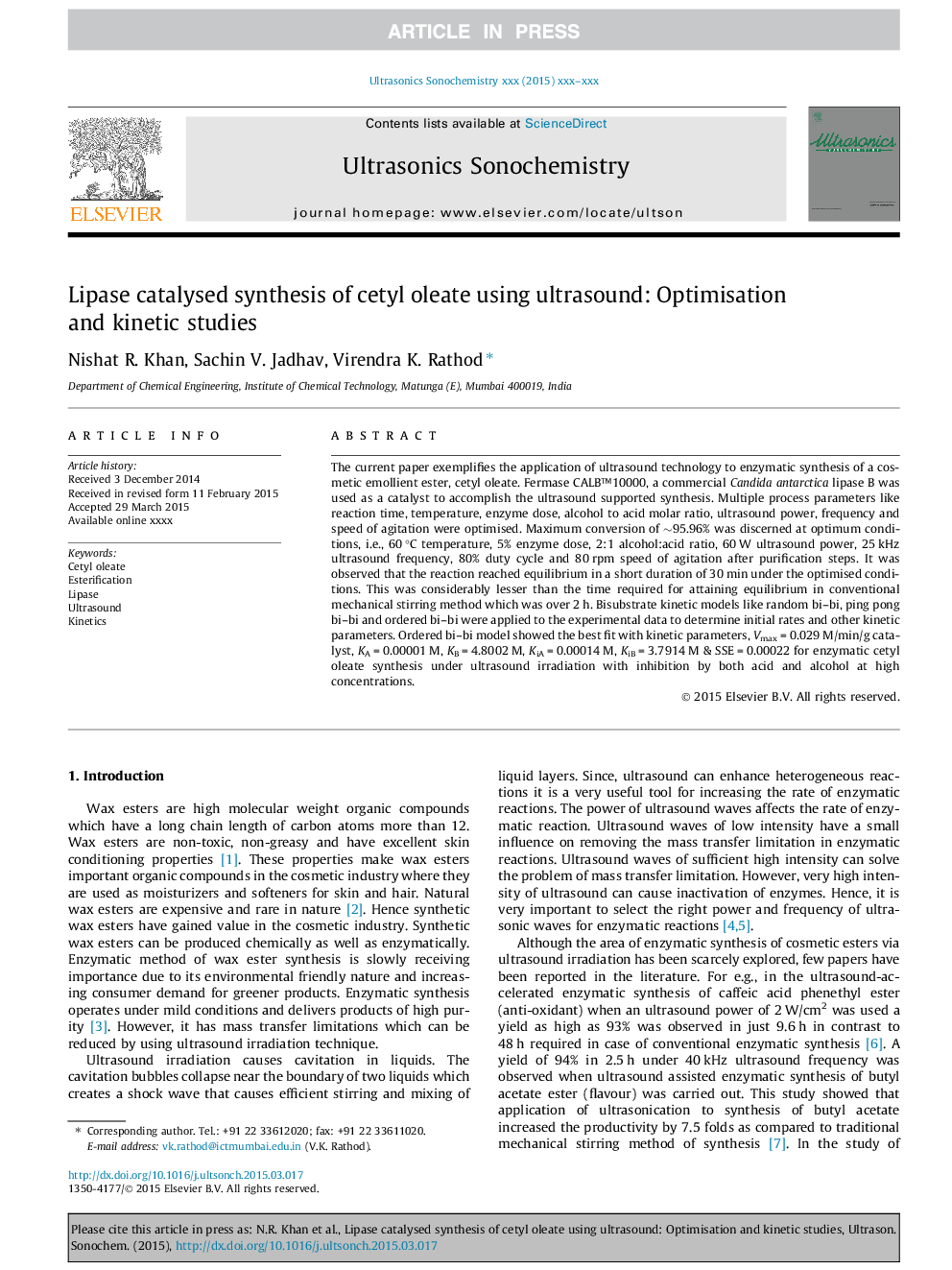| Article ID | Journal | Published Year | Pages | File Type |
|---|---|---|---|---|
| 7704080 | Ultrasonics Sonochemistry | 2015 | 8 Pages |
Abstract
The current paper exemplifies the application of ultrasound technology to enzymatic synthesis of a cosmetic emollient ester, cetyl oleate. Fermase CALBâ¢10000, a commercial Candida antarctica lipase B was used as a catalyst to accomplish the ultrasound supported synthesis. Multiple process parameters like reaction time, temperature, enzyme dose, alcohol to acid molar ratio, ultrasound power, frequency and speed of agitation were optimised. Maximum conversion of â¼95.96% was discerned at optimum conditions, i.e., 60 °C temperature, 5% enzyme dose, 2:1 alcohol:acid ratio, 60 W ultrasound power, 25 kHz ultrasound frequency, 80% duty cycle and 80 rpm speed of agitation after purification steps. It was observed that the reaction reached equilibrium in a short duration of 30 min under the optimised conditions. This was considerably lesser than the time required for attaining equilibrium in conventional mechanical stirring method which was over 2 h. Bisubstrate kinetic models like random bi-bi, ping pong bi-bi and ordered bi-bi were applied to the experimental data to determine initial rates and other kinetic parameters. Ordered bi-bi model showed the best fit with kinetic parameters, Vmax = 0.029 M/min/g catalyst, KA = 0.00001 M, KB = 4.8002 M, KiA = 0.00014 M, KiB = 3.7914 M & SSE = 0.00022 for enzymatic cetyl oleate synthesis under ultrasound irradiation with inhibition by both acid and alcohol at high concentrations.
Related Topics
Physical Sciences and Engineering
Chemistry
Chemistry (General)
Authors
Nishat R. Khan, Sachin V. Jadhav, Virendra K. Rathod,
